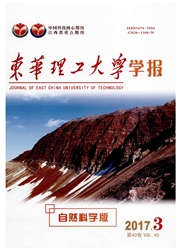

 中文摘要:
中文摘要:
粤北下庄矿田是我国迄今为止发现的最大的花岗岩型铀矿床矿产地。以新桥下庄断裂带为界,下庄矿田的东、西部"交点型"铀矿化存在明显的差异,东部"交点型"铀矿化表现为铀矿床多、规模大且品位富,如335,336,338,339等矿床;西部"交点型"铀矿化则多为矿化点,且数量少、规模小、品位低,如明珠湖铀矿点。以东部第三辉绿岩组(下庄石示下辉绿岩组)中东部的336矿床和西部的明珠湖铀矿点为例,从岩石化学特征、矿物组合特征、岩石蚀变特征、断裂构造、热液活动特征以及铀矿化特征等方面,对下庄矿田东、西部"交点型"铀矿化的差异进行分析探讨,认为造成下庄矿田东、西部"交点型"铀矿化差异的主要原因是两区断裂性质、规模,热液活动强度与活动期次的不同所引起。
 英文摘要:
英文摘要:
Xiazhuang ore field in the northern Guangdong province is the biggest granite uranium deposit that has been discovered in china so far.Studies show that the "intersection type" uranium ores in the eastern and western parts of the Xiazhuang ore field are quite different between the two sides of the Xinqiao-Xiazhuang fault.The eastern part contains lots of rich and big deposits,such as 335,336 and 339 uranium deposit;but the western part only has few lean and small mineralized points,such as Mingzhuhu uranium-mineralization point.By studying its petrochemistry characters,mineral association characters,rock-alteration characters,fault-structure,hydrotherm-movement and uranium mineralization characters and so on,we discuss the differences about the "intersection type" uranium ores between the eastern and western parts of the Xiazhuang ore field with the eastern 336 deposit and Ming Zhuhu uranium-mineralization point in the third diabase group as the case.We consider that the differences about the uranium-ore forming between the eastern and western parts of Xiazhuang ore field is caused by the differences in kinds of fracture,tectonic intensity and tectonic periods betide in this two areas.
 同期刊论文项目
同期刊论文项目
 同项目期刊论文
同项目期刊论文
 期刊信息
期刊信息
